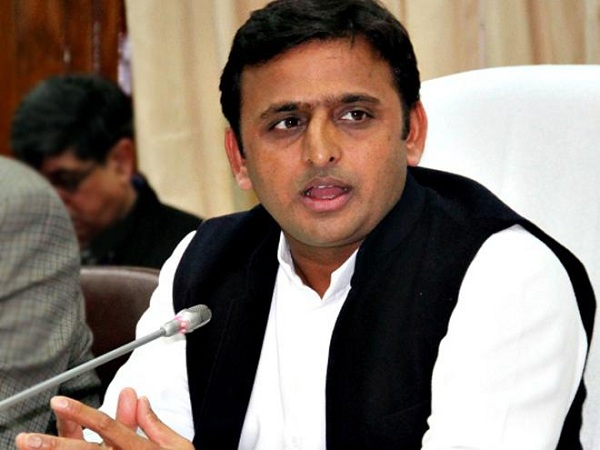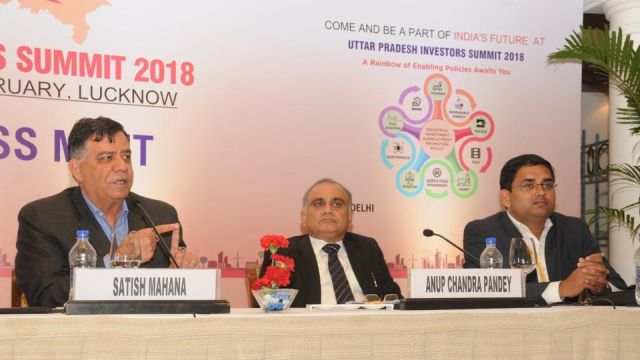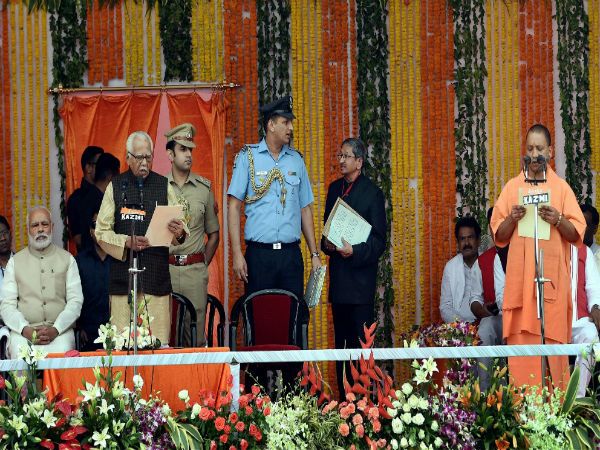
by Editor | May 25, 2021 | News, Politics

Akhilesh Yadav
By Mohit Dubey,
Lucknow : Banished into political hibernation after a humiliating drubbing in the 2017 assembly elections, the Samajwadi Party (SP) of late seems to have got its voice and bearings back, led by its young leader and party chief, former Chief Minister Akhilesh Yadav.
After a gap of almost 10 months, the Yadav scion has, in the past one month, not only been vocal in his criticism of the Yogi Adityanath government but has also established the “missing connect” with party cadres, specially the youth.
Reduced to 47 in a 403-member assembly, the SP has been struggling to remain centre-stage even as the 325-member-strong Bharatiya Janata Party (BJP) gallops from one electoral victory to another in the state. Akhilesh has been meeting party workers from every nook and corner of the state in the past few weeks for their feedback on what went wrong in the assembly polls where its numbers shrank from a high of 224.
He has also begun work on setting the caste combinations and demographic arithmetic right. Party insiders say that “bhaiyya-ji” — as he is fondly called by his followers — has decided to stop sulking at the electoral losses and rather garner strength to take on the BJP’s might with renewed vigour. Yadav is said to have worked the wires with opposition party leaders in December 2017, trying to forge a front that could collectively counter the BJP’s might.
This came as a surprise to many, mostly those who think Akhilesh Yadav is hesitant in getting off the high horse and getting into “realistic” politics of “some sense, camaraderie”. Yadav not only initiated a process where opposition party leaders were brought on the same page against what the SP terms as manipulation of the electronic voting machines (EVMs) but has also authorised state party leaders to begin similar talks with like-minded leaders and legilsators in other parties.
“We are trying to take the help of all parties in exposing the BJP,” state spokesman and former minister Rajendra Chowdhary said. Yadav himself has pointed out that he has “understood the game of the BJP” and would now “take on the electoral war of the BJP in their own style”.
“Loha, lohe ko katta hai, ab hum Bhajpa ko usi ki bhasha mein samjhayenge (in a battle of equals, the BJP will be paid back in its own coin)”, Yadav declared at a recent presser.
The SP is already admitting in its fold leaders of various castes like Nishads, Thakurs and Brahmins — and a lot of Muslims have also returned to the party in the past few weeks. The party has so far distanced itself from the Congress and is focussing on rebuilding its cadre and boosting the morale of the crestfallen faithful. But is this enough? Opinion is divided.
While political observers see a shift in Akhilesh’s attitude of late and view it as a welcome sign that he is trying to unite the opposition forces and simultaneously rebuild the SP, they feel a sustained campaign against the BJP government, both at the centre and the state, is the need of the hour. Reining in the lumpen cadre in the party is another challenge. At a recent press conference, his cadres took over the auditorium, forcing journalists to leave in a huff.
Akhilesh finally apologised for the unruly behaviour of his party cadres. Clearly, he realises the pitfalls of being caught in the old image of the party. Now, time will tell how much he can change his own party, make it battle ready and challenge the might of the so far unstoppable BJP.
(Mohit Dubey can be contacted at mohit.d@ians.in)
—IANS

by Editor | May 25, 2021 | Business, Emerging Businesses, Investing

Kumar Mangalam Birla
Lucknow : Aditya Birla Group Chairman Kumar Mangalam Birla called on Uttar Pradesh Chief Minister Yogi Adityanath at his official residence on Tuesday and discussed investment opportunities in the state, an official said.
The Chief Minister informed Birla about the various facilities being offered to investors by the state government for setting up business in the state.
Adityanath pointed out that the present government had spruced up the law and order machinery along with strengthening the infrastructure facilities in Uttar Pradesh.
He also apprised the eminent businessman of how the state had implemented sector-wise policies under the Industrial Investment and Employment Promotion Policy, also assimilating within attractive provisions for establishing industry in the state.
The Chief Minister also extended an invitation to Birla to attend the investors’ meet to be held in the state capital in February.
—IANS

by Editor | May 25, 2021 | Business Summit, Events, Investing

Satish Mahana and Anup Chandra Pandey
Kolkata : The Uttar Pradesh government is expecting to sign MoUs worth Rs 1 lakh crore for investments during the upcoming investors’ summit scheduled to be held in February, an official said here on Friday.
“The MoUs worth Rs one lakh crore of investments are expected to be signed during the summit,” State Infrastructure and Industrial Development Commissioner Anup Chandra Pandey told reporters here after a road show for the investors’ summit, organised in association with CII.
He said the state has come out with an overall industrial policy and 14 sectoral policies including in textiles, civil aviation, IT, MSMEs, food processing and among others.
“There are some futuristic policies that are coming in the next 15 days and these policies will be in the areas of electric vehicle, logistic and warehousing, defence manufacturing and pharmaceuticals sector,” he said.
The state will shortly unveil electronic clearance system which would not require any human interface and the system will be up and running before the summit, Pandey said while addressing the potential investors in the road show here.
State Industrial Development Minister Satish Mahana said the has planned to organise a global road show after the summit which will be held in Lucknow February 21-22 and will be inaugurated by Prime Minister Narendra Modi.
The state agencies has land banks of 10,000 acres which are ready for giving possession to industries, Pandey said, adding the state has come out with a policy for “private land banks” because somebody might find it cheaper to buy land in comparison to acquiring land and giving compensation.
Inviting investors to join the summit, Mahana said the state has large chunks of land for large industries.
“We have large chunk of land and particularly in the side of the Yamuna Expressway we have the biggest chunk of land. By the both sides of express highways, we are in process to acquire or purchase land also on mutual understanding,” he said.
Pandey said the state officials met industrialists from Kolkata and got positive response from them.
“Companies like ITC has expressed interest in setting up a food park and solar park in the state. Srei group has expressed its desire to invest in urban infrastructure,” he said.
The state government had organised four road shows in Delhi, Bengaluru, Mumbai and Hyderabad to attract investments and after the Kolkata one, another road show would be held in Ahmedabad.
The state is focusing on logistic sector as the dedicated freight corridors -the Western Corridor running between Delhi-Mumbai and Eastern Corridor from Amritsar to Kolkata-lie in Uttar Pradesh.
“We are planning to develop a number of industrial integrated townships across the highways and these could be linked to these highways,” Pandey added.
As many as 15 airports are being developed in the state and under the regional air connectivity scheme, the state has guaranteed viability gap funding to the airlines for running flights in these routes, he said.
—IANS

by Editor | May 25, 2021 | News, Politics
 By Mohit Dubey,
By Mohit Dubey,
Lucknow : Uttar Pradesh was a parched land for the Bharatiya Janata Party (BJP) for 14 long years. Ever since the then Chief Minister Rajnath Singh lost the plot in the 2003 state assembly elections, the saffron party found itself on the sidelines of the country’s politically most crucial state.
In election after election, the BJP was battered by regional satraps like Samajwadi party (SP) chief Mulayam Singh Yadav and Bahujan Samaj Party (BSP) supremo Mayawati. In 2017, its political “vanvaas” (exile) ended and the party romped home with its highest seat tally ever — 312 in a house of 403.
Building on the stunning victory of the 2014 Lok Sabha election, where the party won 73 of the 80 seats on offer, the BJP’s well-oiled organisation and a frenzied campaign by Prime Minister Narenda Modi, party President Amit Shah and many regional leaders ensured the end of the exile and a return home in style.
The party promised a dejected population the moon and swayed them in its favour. People, fed up with the BSP and the SP misrule, had little option. The development Chief Minister Akhilesh Yadav’s brought was for all to see but apparently the electorate was miffed with the SP’s internal feud and the decision to join hands with Rahul Gandhi’s Congress.
The results were catastrophic for the SP and the Congress, the former slipping to its lowest-ever tally of 47 and the latter doing no better than its last showing.
The BJP’s “Dalit nahin Daulat ki beti” (Not a Dalit but the daughter of wealth) credo gained currency during the campaign and the BSP, which was largely being viewed by the media and political observers as a serious contender for the throne, was reduced to an abysmal 19 seats. The corruption charges stuck to Mayawati, already rattled by many desertions in the party.
Uttar Pradesh has always been the pivot of all politics that the saffron fold ever practised or preached. From a party of two members in the Lok Sabha to a centerstage challenger to the grand old Congress, the state has played an important role. It was here where the BJP’s biggest political asset and electoral ace — Ram Janmabhoomi — existed. But after reaping the harvest of the “Jai Shri Ram” wave in the late 1990, the BJP found itself mired in inner-party bickering in the early 2000s.
Its tallest leader in the state, a backward Lodh, Kalyan Singh, had rebelled against the party high command, then comprising Atal Bihari Vajpayee and Lal Krishna Advani, and had to be ultimately thrown out. His replacement, Ram Prakash Gupta, could neither hold the party together nor the government. His forgetfulness became the butt of many jokes in political and bureaucratic circles. Kalyan Singh would often ridicule him on how the “beginning of BJP’s end” was for all to see.
And, as Kalyan Singh plotted his next moves — not to win seats but to dent the BJP — from his Mall Avenue bungalow, which also housed his close associate Kusum Rai, who was a cause of consternation when he was the Chief Minister, the BJP high command saw the damage that the tall backward leader was causing to its foundations in the Hindi heartland. Gupta was soon replaced by Rajnath Singh, the shrewd Thakur leader from eastern Uttar Pradesh — but apparently that was too little too late.
Under Rajnath Singh, who was often accused by colleagues and opponents of promoting only Thakurs, the BJP’s citadel cracked and the party lost power, coming down to two digits in the state assembly. Mandarins in the party stitched up an alliance with the mercurial Mayawati despite stiff opposition from the Brahmins and the Thakur lobby, who were still smarting under her past slogans like “Tilak Tarazoo aur Talwaar, inko maro joote chaar”.
After a brief, 56-day spell of President’s rule, BJP-BSP thrashed out differences and Mayawati became the Chief Minister for the third time round. But the problems kept mounting and Mayawati resigned in August 2003, parting ways amid acrimony, to end one of the strangest alliances in Indian politics.
In August the same year, Mulayam Singh Yadav was sworn in as the Chief Minister with the support of BSP dissidents and ran the government until 2007. It is widely speculated that a group of BJP leaders convinced Vajpayee that Mulayam would help in the 2004 Lok Sabha elections. This never happened but the SP made it to the Lok Sabha with its strongest contingent ever of 39.
Lawlessness and mis-governance led to Mulayam Singh’s loss at the hustings in 2007 and Mayawati returned with an absolute majority — and the BJP still remained on the fringes. In 2012, Mulayam Singh’s son Akhilesh Yadav led an impressive campaign and got a majority (for the first time) for his party.
The BJP, though looking upbeat yet again, did not move up in the electoral stocks. Its golden run started in 2014 when it peaked with 73 seats in the general election and, to its credit, it managed not only to maintain the lead in 2017 but also bettered it.
In March, however, when it picked firebrand monk-turned-politician Yogi Adityanath for the Chief Minister’s post, it left many amused — and many alarmed. Nine months down the line, though there have been no communal conflicts, Adityanath continues with his Hindutva agenda and the BJP continues to win elections — something most guess were things mandated from the head of the Gorakshnath Mutt.
(Mohit Dubey can be contacted at mohit.d@ians.in)
—IANS

by Editor | May 25, 2021 | News, Politics

Yogi Adityanath
Lucknow : The Uttar Pradesh government presented a supplementary budget of Rs 11,388.17 crore for the financial year 2017-18 in the state assembly on Monday.
This is the first supplementary budget of the Yogi Adityanath-led Bharatiya Janata Party (BJP) government.
Of the major proposed allocations in the budget, Rs 58 crore has been earmarked for the Deendayal Upadhyaya Gram Jyoti scheme, Rs 200 crore for payment to sugarcane growers and Rs 164 crore for the police department, largely for modernisation, and Anti-Terrorism Squad and Special Task Force.
It also proposed an allocation of Rs 4 crore for the Purvanchal Expressway, Rs 1.3 crore for the International Buddhist Institute and Rs 7 crore for payment of power dues in state prisons.
The government has proposed a budgetary allotment of Rs 425 crore for medical colleges in the state and Rs 522 crore for the Swachh Bharat Mission.
Apart from this, Rs 200 crore has been proposed for the Civil Aviation Department, Rs 11 crore for the Kailash Mansarovar building to be built in Ghaziabad, Rs 84 crore for minority welfare, Rs 40 crore for roads leading to the fabled Kashi Vishwanath temple, Rs 1,125 crore for the Pradhan Mantri Awas Yojana and Rs 12 crore for strengthening of the Ram Ghat in Chitrakoot and other pilgrim hotspots.
—IANS





